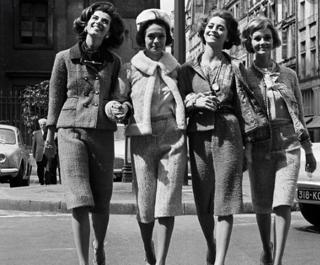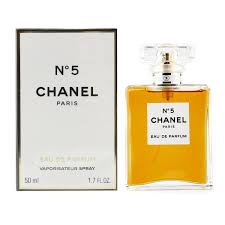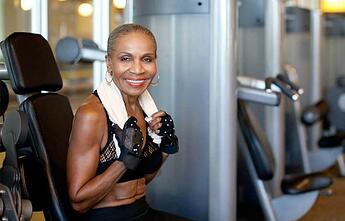Was trying to edit Wiki so it was not so long and involved and got in right muddle
Story I read a long time ago and came across it again recently,
Louis Renault the founder of Renault as certain as it seems was Collaborating with The Nazi’s in World World 11
A link of two will be better all around right now Bretrick…sometimes this Dyslexia take’s over when stressed out…
this is like a double edged sword as there are stories that are on either side.
RIGHT OF REPLY OF THE HEIRS OF LOUIS RENAULT: ANNICK FABRY, HÉLÈNE DINGLI, LOUIS RENAULT, HENRI RENAULT AND OLIVIER RENAULT
The article entitled “It was January 16: Renault is nationalized” published on January 16, 2022 on the website www.libération.fr contains two statements that can be qualified as defamation directed against the memory of Louis Renault. It is in fact first stated that Louis Renault was " in the pre-war period " " close to the Croix-de-Feu and the Cagoule, a terrorist and clandestine movement of the extreme right " then it is maintained that Louis Renault himself proposed to the Nazi occupiers to requisition its factories which supplied trucks to the German armed forces.
As part of the exercise of their right of reply provided for by the combined provisions of the laws of June 21, 2004 and July 29, 1881, the descendants of Louis Renault, who have been following for decades the important historical research work concerning the founder of the Usines Renault, would like to point out that these two assertions are not based, to their knowledge, on any serious document or reliable historical source.
The first assertion that Louis Renault was close to far-right movements and in particular to a terrorist group, the Cagoule, has no serious basis. Louis Renault never supported far-right groups, movements which he on the contrary condemned in a text dated 1937 entitled “Three Reforms” in which he castigated “ right or left revolution ”, specifying that a “ fascist revolution changes nothing except on the surface ” at the cost of “ much misery and bloodshed ” and “ lost freedom ”. Louis Renault also criticized his nephew by marriage François Lehideux, managing director of his company, for his proximity to far-right movements, a link which could tarnish the image of Usines Renault. As for the false accusation that the Renault company financed the Cagoule, it has a known origin. It comes from a communist trade unionist in the context of a violent social movement in November 1938 and earned its author a conviction for defamation in January 1939.
The second allegation according to which Louis Renault himself proposed the requisition of his factories to the German occupiers is also a manifest historical error. On June 18, 1940, the day his factories were requisitioned by the Wehrmacht, Louis Renault was in North America on mission from the French government and participated in organizing military aid from the United States to France, and in particular the manufacture of tanks, in order to continue the war against Germany. Louis Renault returned to Paris on July 23, 1940, more than a month after the requisition of his factories in which he played no role.
The Paris Court of Appeal declared itself incompetent on Wednesday in the case of the heirs of the automobile manufacturer, who are seeking compensation from the State for the nationalization-sanction of the firm in 1945. In both camps, historians are talking archives.
While the grandchildren of Louis Renault intend to continue to fight on the legal ground to rehabilitate their grandfather, accused of collaboration during the Second World War, the manufacturer’s unions are indignant at what they describe as a business revisionist. In reality, the controversy has never stopped since the nationalization-sanction decided upon at the Liberation and which the heirs are trying to reverse . No one disputes that the Renault Factories Limited Company (SAUR) produced for Nazi Germany, and that this production generated profits. But what is Louis Renault’s personal responsibility? What exactly did he produce? And with what zeal? Even today, historians strongly differ on the role played by the manufacturer during the German occupation.
“An exceptional place in the German war apparatus”
Two theses are opposed. The first is advocated by the historian Annie Lacroix-Riz , professor emeritus at the University of Paris-VII, specialist in economic collaboration during the Second World War and author in particular of French Industrialists and Bankers under the Occupation. Economic collaboration with the Reich and Vichy . The trade union world relies on his research to denounce “the vast rehabilitation enterprise of Louis Renault”. According to her, Renault not only manufactured tanks, but also occupied “an exceptional place in the German war apparatus”. As a 96% shareholder, Louis Renault is personally held responsible for this “enthusiastic” collaboration.
The other has as its main spokesperson the historian Laurent Dingli , who devoted a biography to the industrialist. His detractors point out that he is a specialist in the 17th century and, above all, that he is the husband of one of the industrialist’s granddaughters. In an article published in April on the site louisrenault.com, he accuses Annie Lacroix-Riz of “major historical errors” and asserts that the negotiations with the Nazis in the first days of the Occupation were the work not of Louis Renault but of his nephew by marriage, François Lehideux, the general director of the company, with whom Louis Renault was reportedly on bad terms. He also assures that although Renault produced trucks and repaired tanks for the Germans, it never manufactured war equipment. Above all, these repairs would have been carried out “in workshops requisitioned by the Germans under the direction of their engineers and with personnel recruited directly by them”.
Archives still inaccessible
For historian Patrick Fridenson, director of studies at EHESS and author of A History of Renault Factories , the truth lies in neither of these two positions. “After the bombings of March 1942, company records show that management was not unanimous in rebuilding the factories. It was Louis Renault who, returning from his vacation in Saint-Moritz, decided to do it,” he explains. An indication of the desire shown by the manufacturer to maintain production for the Germans despite the bombings.
But, on the question of tanks, Patrick Fridenson affirms, like Laurent Dingli, that Renault did not manufacture any. Above all, he is careful not to draw hasty conclusions about the degree of personal and voluntary involvement on the part of Louis Renault. “In the current state of the sources, we do not have the traces of the declarations which would allow us to know to what extent he pushed the wheel or on the contrary slowed down production,” he assures. Some private Daimler archives are not yet accessible. And if some German national archives are in France, a large part is scattered all over the world.
An argument that Annie Lacroix-Riz considers inadmissible. The historian recognizes that we have to deal with the “massive destruction or subtraction of archives” carried out by the Renault factories and the Automobile Industry Organization Committee (COA), created under Vichy to adapt production to needs. Germans. But she claims to have overcome this obstacle by studying a large quantity of public and private archives, French and German, all dating from the Occupation.
As for the question of tanks, “you only have to read the notes from the Gaullist intelligence services in London, where the production and delivery of Renault tanks are described in detail,” she says. It is no coincidence that the Allies, who ultimately did little to bomb French industrial installations, considered it crucial to bomb the Renault site at Billancourt four times. And if the COA, which discussed with the German arms services in France the benefits granted to the various manufacturers, estimated in 1942 that Renault deserved to receive an “exceptional” margin rate of 12%, or 20% more than the other major manufacturers, it is because the services rendered to the Wehrmacht put it at risk of particularly severe bombings which therefore had to be compensated…"
As for the “zeal” shown by the manufacturer to relaunch production despite the bombings, it shows that "Renault went so far as to build underground factories, and this until July 1944, that is to say a months before release.
Then you could just read this…as it is a lot of reading!!!











